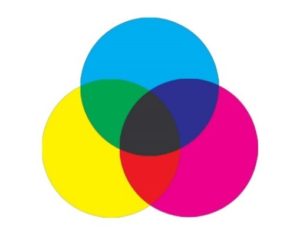Accessible Color
 Color is a great way to add interest and style to a document. It can also help to highlight important information and serve as a visual indicator of status. However, for students who are blind, have low vision or are colorblind, the use of color can hinder how well some can see or interpret your materials. Therefore, it is important to be aware of how color can affect different students. For example:
Color is a great way to add interest and style to a document. It can also help to highlight important information and serve as a visual indicator of status. However, for students who are blind, have low vision or are colorblind, the use of color can hinder how well some can see or interpret your materials. Therefore, it is important to be aware of how color can affect different students. For example:
- Students who are blind cannot see color
- Students who are colorblind may not be able to tell the difference between different colors
- Students with low vision may have problems distinguishing text (or graphics) if the text and the background color do not have enough contrast.
- Students with some cognitive or attention disabilities can be overwhelmed or distracted by the use of too much color (or too many colors) on a single page.
Things to keep in mind
- Do not use color as the only method of representation. Use text or graphic icons (with appropriate alt-text) to ensure that the message is not lost if the student cannot see color or is using a screen reader
- Be sure that there is enough contrast between the text and the background. For example, reading dark grey text on a light blue background can make it difficult to easily read the information. This can be especially problematic for students with low vision or dyslexia.
- The use of too much color can distract from your message and can disorient some students with attention disorders or cognitive disabilities. Limit the number of colors used in a document to 2-3 complementary colors.
- Some colors also have cultural connotations. When choosing colors, make sure that you are not sending an unintended message.
Tips and Tricks
Keep in mind that color is good – you don’t need to stop using color or limit your creativity. You just need to be mindful of how it is used.
- Using color as a supplemental highlight can be very beneficial for some students who are multimodal learnrs or with some learning disabilities.
- To check if a document will make sense and be usable to a student who is colorblind, print out the page in black and white – does it still convey all of the meaning and information without color?
- For charts and graphs that use color to display different segments of data, include labels or patterns (along with color) to help users identify each category.
- You can use free online tools such as:
- WebAIM’s Color Contrast Checker to make sure that there is enough contrast between your background and text.
- Paciello Group’s The Colour Contrast Analyser which lets you take a “snapshot” of a section of your screen then lets you know if the colors in that snapshot pass the contrast test.
- To check the contrast of text on background images, try the Text on Background Image a11y Check
- Create accessible color themes for your documents:
- See what your images and pages look like to those with different types of color-blindness:
